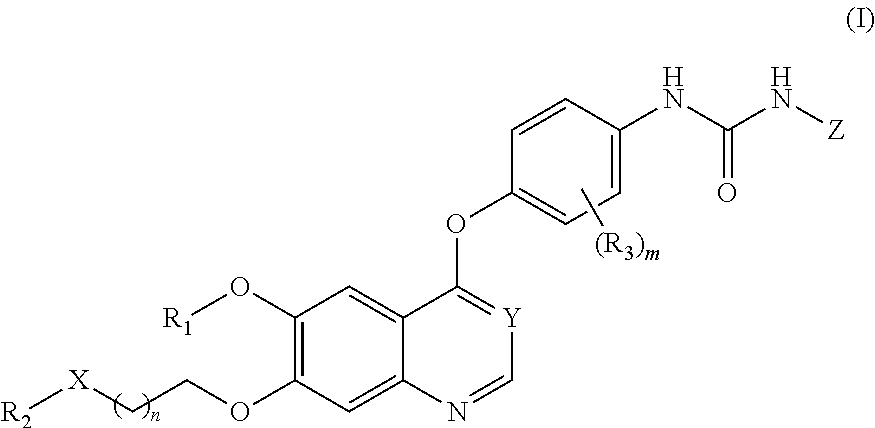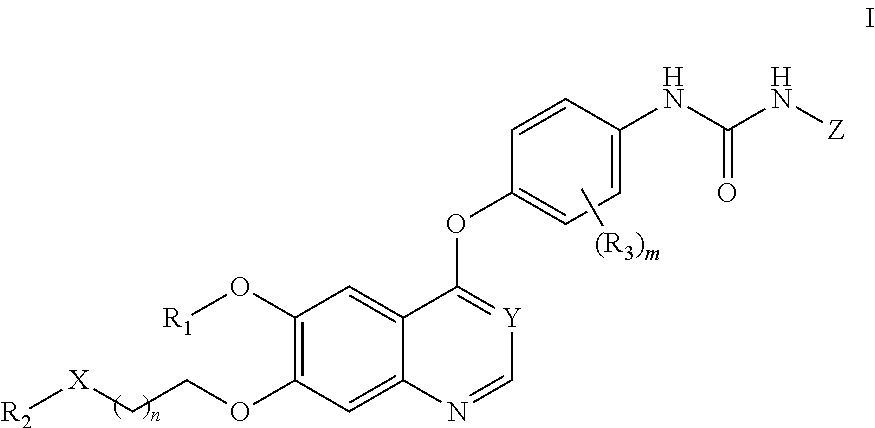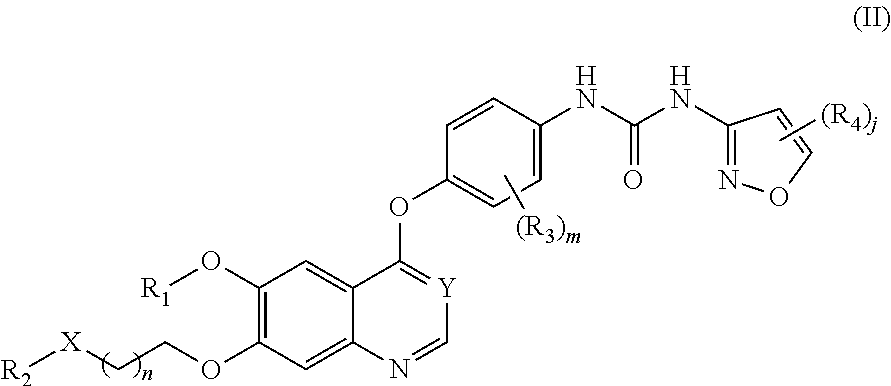Therapeutic compounds and uses thereof
a technology of proliferative diseases and compounds, applied in the field of therapeutic compounds and methods of treating proliferative diseases and diseases associated with anagiogenesis, can solve problems such as irreversible vision loss in developed countries
- Summary
- Abstract
- Description
- Claims
- Application Information
AI Technical Summary
Benefits of technology
Problems solved by technology
Method used
Image
Examples
examples
[0279]In order that the invention described herein may be more fully understood, the following examples are set forth. It should be understood that these examples are for illustrative purposes only and are not to be construed as limiting this invention in any manner.
General Procedures
Compound 1
[0280]Free phenol (1 equiv) and potassium carbonate (5 equiv) were suspended in N,N-dimethylformamide. Benzyl bromide (I. equiv) was added dropwise and the reaction stirred at 45° C. for 2 hours. The solvent was evaporated and the remaining crust suspended in H2O. The slurry was sonicated and the solid filtered. Filter cake was washed with H2O and hexane, then dried under high vacuum. 1-I: Isolated as light brown solid, yield=1.7 g (95%), m / z 300 (M+H)+. 1-II: Obtained from a commercial source.
Compound 2
[0281]4-Amino-3-chlorophenol hydrochloride (1.1 to 1.5 equiv) was suspended in N,N-dimethylfomamide. The suspension was purged with nitrogen and sodium hydride (2 equiv, 60% suspension in oil) ...
PUM
| Property | Measurement | Unit |
|---|---|---|
| intraocular pressure | aaaaa | aaaaa |
| intraocular pressure | aaaaa | aaaaa |
| temperature | aaaaa | aaaaa |
Abstract
Description
Claims
Application Information
 Login to View More
Login to View More - R&D
- Intellectual Property
- Life Sciences
- Materials
- Tech Scout
- Unparalleled Data Quality
- Higher Quality Content
- 60% Fewer Hallucinations
Browse by: Latest US Patents, China's latest patents, Technical Efficacy Thesaurus, Application Domain, Technology Topic, Popular Technical Reports.
© 2025 PatSnap. All rights reserved.Legal|Privacy policy|Modern Slavery Act Transparency Statement|Sitemap|About US| Contact US: help@patsnap.com



